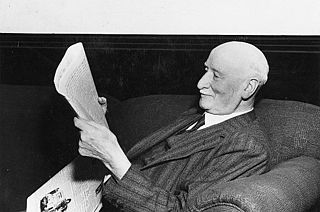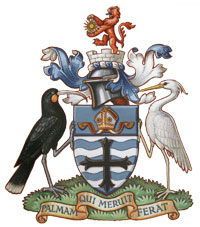
Napier is a city on the eastern coast of the North Island of New Zealand and the seat of the Hawke's Bay region. It is a beachside city with a seaport, known for its sunny climate, esplanade lined with Norfolk Pines and extensive Art Deco architecture. Napier is sometimes referred to as the "Nice of the Pacific".

The 1931 Hawke's Bay earthquake, also known as the Napier earthquake, occurred in New Zealand at 10:47 am on 3 February, killing 256, injuring thousands and devastating the Hawke's Bay region. It remains New Zealand's deadliest natural disaster. Centred 15 km north of Napier, it lasted for two and a half minutes and had a magnitude of 7.8 (7.7 ). There were 525 aftershocks recorded in the following two weeks, with 597 being recorded by the end of February. The main shock could be felt in much of New Zealand, with reliable reports coming in from as far south as Timaru, on the east coast of the South Island.
The 2nd New Zealand Parliament was a term of the Parliament of New Zealand. It opened on 15 April 1856, following New Zealand's 1855 election. It was dissolved on 5 November 1860 in preparation for 1860–61 election. The 2nd Parliament was the first under which New Zealand had responsible government, meaning that unlike previously, the Cabinet was chosen by Parliament rather than by the Governor.

Napier Port is in Napier, New Zealand, on Hawke Bay. It is the North Island's second largest export port by tonnage, and is owned by Napier Port Holdings Limited.

The Hawke's Bay Province was a province of New Zealand. The province separated from the Wellington Province following a meeting in Napier in February 1858, and existed until the abolition of provincial government in 1876. At the time of its establishment in 1858, the European population of the provincial district was only 1,185.

Napier is a New Zealand parliamentary electorate, returning one Member of Parliament to the House of Representatives. It is named after the city of Napier, the main urban area within the electorate. The electorate was established for the 1861 election and has existed since. Since the 2014 general election, Napier has been held by Stuart Nash of the New Zealand Labour Party. Previously, it had been held by Chris Tremain of the New Zealand National Party, who stood down prior to the 2014 election.
The mayor of Whanganui is the head of the Whanganui District Council. Since 1872, there have been 29 mayors. Andrew Tripe is the current mayor.

Sir Robert Lachlan Macalister was the Mayor of Wellington from 1950 to 1956, and had been the acting mayor for five months in 1948 during the absence overseas of Will Appleton.

John Vigor Brown, known as Vigor Brown, was a New Zealand Member of Parliament for Napier, in the North Island. He was Mayor of Napier for a total of 18 years. He was a well-known figure in his adopted city, a successful businessman, and involved in many clubs and organisations.
Cyril Geoffrey Edmund Harker was a New Zealand soldier, lawyer and politician of the National Party.

Albert Edward Jull was a New Zealand politician of the Liberal Party, the United Party and from 1938 the National Party.

George Henry Swan was a 19th-century businessman and Member of Parliament in Hawke's Bay, New Zealand.
The 4th New Zealand Parliament was a term of the Parliament of New Zealand.

Joseph Petrie was a 19th-century Member of Parliament from Westland, New Zealand.
Cecil Augustus Fitzroy was a 19th-century Member of Parliament from the Canterbury region of New Zealand, and later Mayor of Hastings.

The mayor of Nelson is the head of the municipal government of Nelson, New Zealand, and presides over the Nelson City Council. The mayor is directly elected using a single transferable vote electoral system. The current mayor is Nick Smith, who was elected in September 2022.

The Mayor of Thames officiated over the Thames Borough of New Zealand, which was administered by the Thames Borough Council. The office existed from 1874 until 1975, when Thames Borough and Coromandel County were amalgamated to form Thames-Coromandel District. There were 24 holders of the office.

The mayor of Blenheim officiated over the borough of Blenheim, New Zealand. The office was created in 1869 when Blenheim became a borough, and ceased with the 1989 local government reforms, when Blenheim Borough was amalgamated with Picton Borough and Marlborough County Council to form Marlborough District. There were 31 mayors of Blenheim. The last mayor of Blenheim, Leo McKendry, was elected as the first mayor of Marlborough.
The Mayor of New Plymouth is the head of municipal government of New Plymouth District, New Zealand. Since the 2022 local elections, the mayor is elected directly using the single transferable vote electoral system; prior to that, first-past-the-post voting was used. The current mayor is Neil Holdom.

The Napier mayoral election, 1917 was held to determine the next Mayor of Napier. At this time Napier held their local elections biennially. In 1915, elections were held for the Mayor of Napier plus other local government positions. The polling was conducted using the standard first-past-the-post electoral method.






























